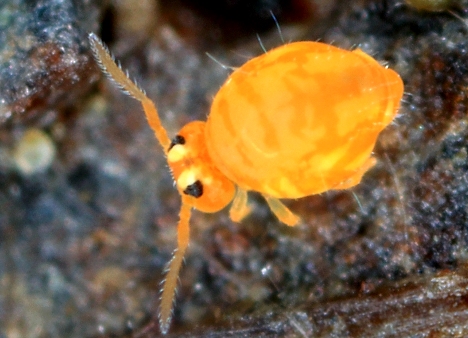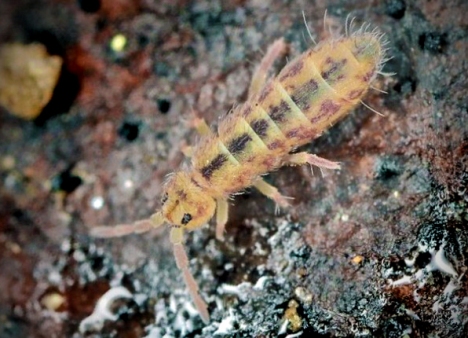Tool for visual determination of some of the main families:
To "rough up" the identification work, I propose here a visual determination tool (not exhaustive)which, based on simple questions, makes it possible to establish the membership of a springtail to a given family. Indeed, most of these questions can be answered on the basis of macro photographs. The illustrations are given for information only, insofar as several species of the same order can meet similar criteria.
Only two questions require the use of a microscope. For the latter, I replaced the photographs with sketches from the "illustrated key to the families of British springtails" brochure. To deepen the knowledge of the keys of determination, I recommend the work of Steve P. Hopkin: "A key to the collembola of britain and Ireland" and also the Frans Janssens website https://www.collembola.org/ ("keys" menu). Beyond the visual limits, only DNA analysis allows the determination of a possible subspecies.
Prospects: The use of "in situ" macro photography with a high magnification ratio makes it possible to save many springtails by limiting samples for laboratory observation. The work of photographers (often amateurs) as well as the technical progress of their equipment opens the prospect of a non-destructive approach which should now find its place within the already existing panoply of means of determination.
Note: For each family, I put a clickable list of the species that I have listed. Families or species that are not included in this tool can be viewed from the article "Collembola species - identification sheets"
Begin identification by answering this first question:
Order : NEELIPLEONE
Only family of his Order. Small in size, about 1 mm in length, its white to pale brown body has a characteristic "arched" appearance. He does not have an eyepiece.
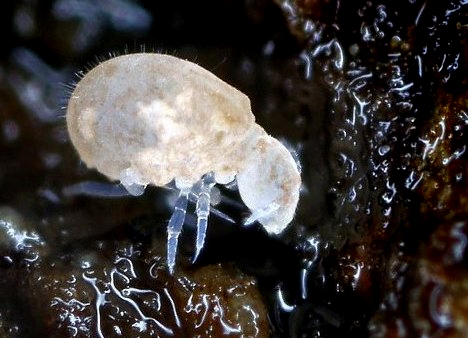
Family : NEANURIDAE
The tergal (dorso-lateral) segmentation of the abdomen is distinct. The antennas are short but their shape is not pyramidal. The body has no tubers. The bristles are arranged in numerous but countable segments. The body shape is long with a stretched trunk. The eyes are present. The legs are short. The three thoracic segments are distinct.
Below : Deutonura conjuncta
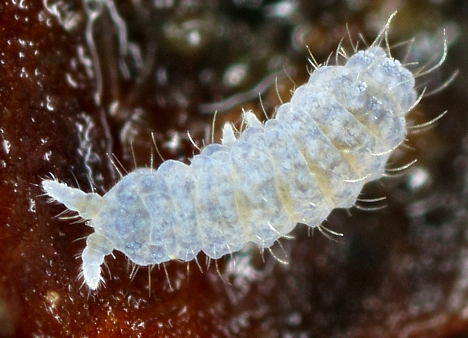
Family : TOMOCERIDAE
The antennas have four segments including a third (Ant.3) particularly developed. The last two segments are ringed. The body is elongated with very distinct abdominal segments. The slightly protruding oral organs are visible. The body has no scales. The third abdominal segment (Abd.3) is generally longer or sometimes very slightly shorter than the fourth.
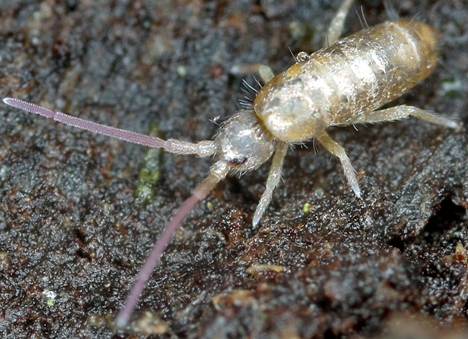
Family : DICYRTOMIDAE
The abdominal segmentation is indistinct on the dorsolateral region. The antennas are as long or longer than the head. The fourth antenna segment is much shorter than the third segment. The trunk has a subglobular appearance.
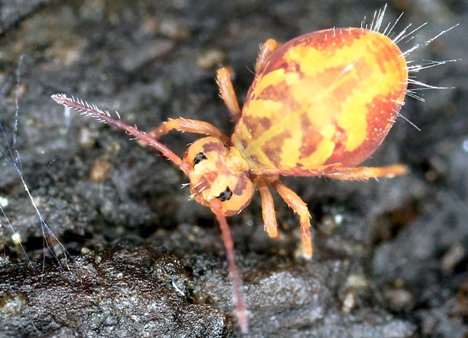
Family: ODONTELLIDAE
The body is elongated and the abdominal segments are well marked on their dorsal part. The mouth cone is elongated and pointed. The antennas are conical. Presence of ocular plates with ocelli.
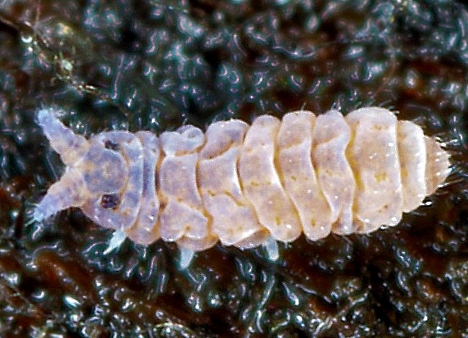
Subfamily: CYPHODERIDAE
The body is elongated with distinct abdominal segments. Buccal parts located in front of the head.
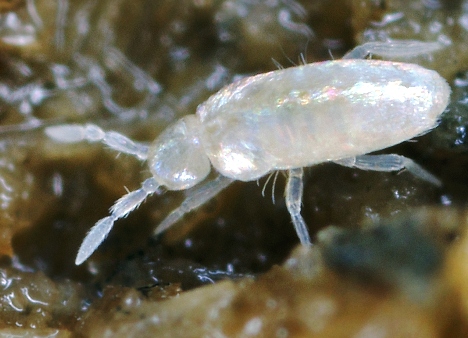
Family : ARRHOPALITIDAE
The antennas are longer than the head. The body has a rather globular appearance with the last abdominal segments (Abd5 and 6) visible in the form of a small protruding mass. The size of the fourth antenna segment (Ant.4) is less than or equal to that of Ant.3. Presence of ocelli in groups of two or four on each side of the head.
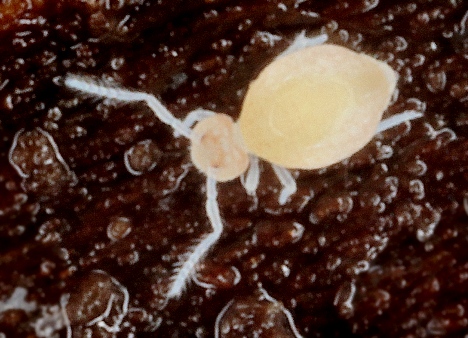
family : PODURIDAE
(Only species of his family)
The antennas are shorter than the head. The shape of the body is elongated. The first thoracic tergite (segment) is clearly visible. the legs are short. The sixth abdominal segment is monolobate and its dorsal part has a rounded appearance. The contours of the segmentation of the trunk are bumpy.
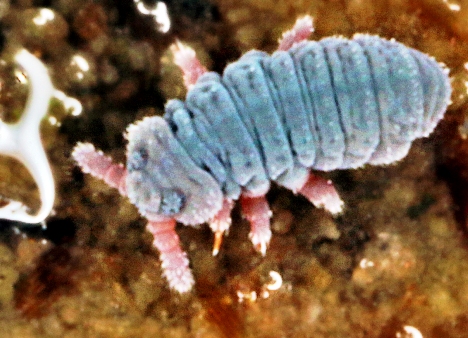
Subfamily: ORCHESELLINAE
The antennas have six antenna segments, the first two (Ant.1 and 2) are subdivided into two sections. The abdominal segments Abd.4, Abd.5 and Abd 6 are generally separate or only the segments Abd.5 and Abd.6 can be merged. Body pigmentation is often specific enough to identify some species.
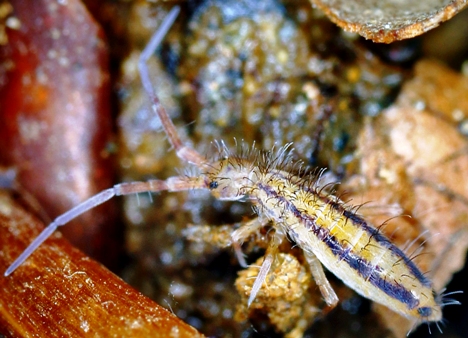
Family: SMINTHURIDIDAE ♂
The fourth antenna segment (Ant.4) is subdivided. These ringed shape divisions are difficult to discern. The antennae of the males carry characteristic hooks allowing them to attach to the antennae of the females during the courtship.
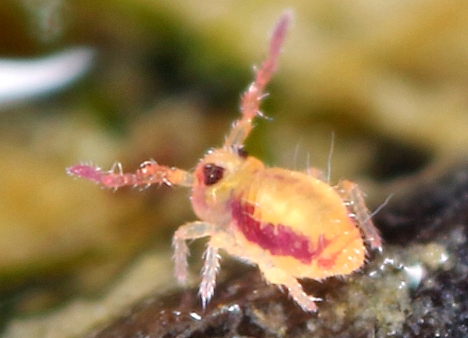
Family : HYPOGASTRURIDAE
La segm
The abdominal segmentation is distinct on the dorsolateral region. The cylindrical antennas are short. The body does not reveal tubers. The bristles are arranged in sparse segments, at most in three transverse rows. The body is long and the thorax elongated with short legs. The eyes are present. The first thoracic tergum (segment) is distinct on its dorsal part.

Families: ONYCHIURIDAE-TULLBERGIDAE
Onychiuridae: The antennae are shorter than the head. Absence of body pigmentation. Elongated body shape. The eyes are absent. First visible thoracic segment. The legs are short. The last abdominal segment (Abd. 6) is monolobed. The dorsal ending of the sixth abdominal segment is pointed. The contours of the thoracic segmentation are bumpy.
Tullbergidae: The body is clearly elongated with very distinct abdominal and thoracic segments.
----------------------------------------------------------------------------------------------------
Below: Deuteraphorura inermis
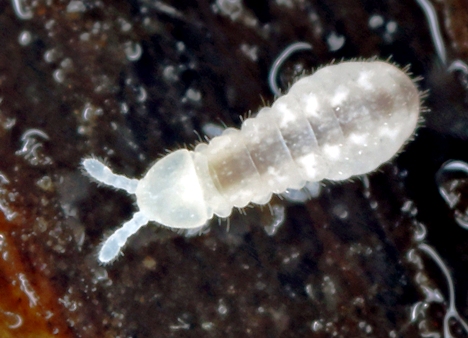
Family : ENTOMOBRYIDAE
The abdominal segmentation is distinct on the dorsolateral region. the antennae are long, but not distinctly longer than the body. The third antenna segment (Ant.3) is less than or equal to the Ant.2 and Ant.4 segments. The fourth abdominal segment (Abd.4) is significantly longer than the other abdominal segments. The trunk is elongated with long legs. The first thoracic segment is indistinct.
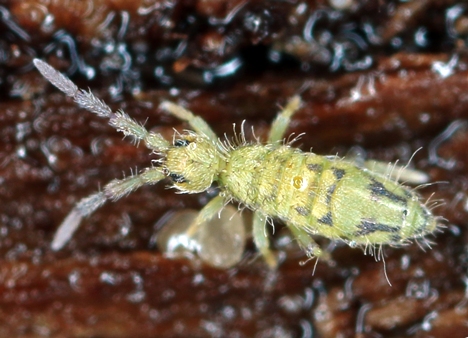
Family : ISOTOMIDAE
Distinct abdominal (dorso-lateral) segmentation. Long antennas with four segments. Third antenna segment (Ant.3) less than or equal to the other segments. Third and fourth non-ringed antenna segments. No scales on the body. Fourth abdominal segment (Abd.4) longer than the third.
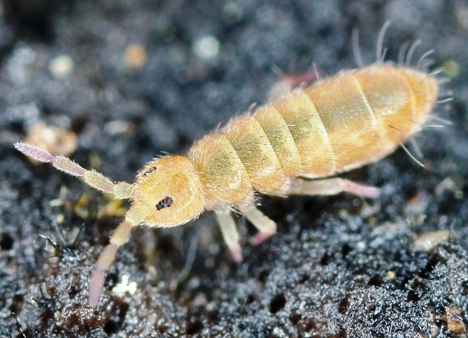
Family : SMINTHURIDAE
The antennas longer than the head with the fourth segment (Ant.4) shorter or equal to the third. Body of globular appearance. The last two abdominal segments (Abd.4 and 5) are grouped in separate projections at the end of the abdomen. Presence of six or more ocelli grouped in an ocular plate on each side of the head.
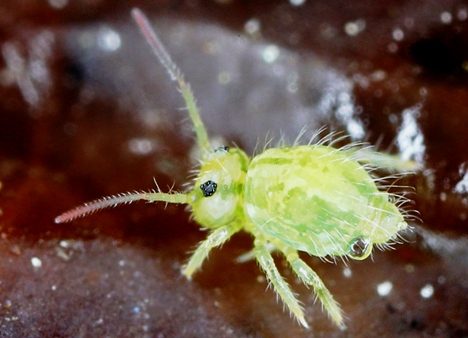
Family : BOURLETIELLIDAE
Absence of thorny macrosetae on the dorsal and abdominal areas. Subglobular trunk with indistinct abdominal segmentation. The antennas are as long or longer than the head. The size of the fourth antenna segment is equal to or longer than that of the third segment. The fourth antenna segment is ringed. Presence of ocular plates with ocelli.
| Bourletiella arvalis | Deuterosminthurus pallipes |
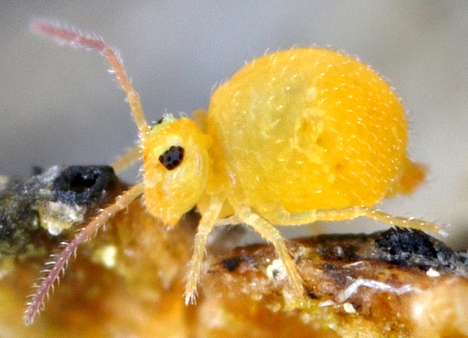
Family : SMINTHURIDIDAE ♀
The antennas longer than the head with the fourth segment (Ant.4) shorter or equal to the third. Body of globular appearance. The last two abdominal segments (Abd.4 and 5) are grouped in separate projections at the end of the abdomen. Presence of six or more ocelli grouped in an ocular plate on each side of the head.
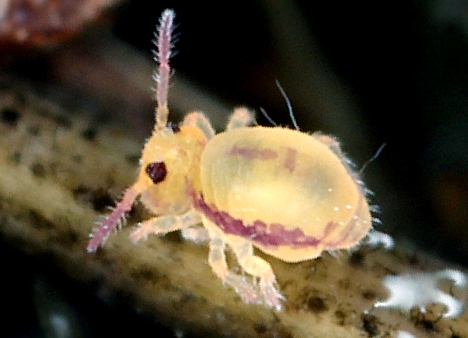
Family : KATIANNIDAE
Absence of dorsal and abdominal spiny macrosetae. The dorso-lateral segmentation of the abdomen is indistinct. The antennas are as long or longer than the head. The size of the fourth antenna segment (Ant.4) is greater than or equal to that of the third segment. The fourth antenna segment is not ringed. The trunk has a subglobular appearance.
